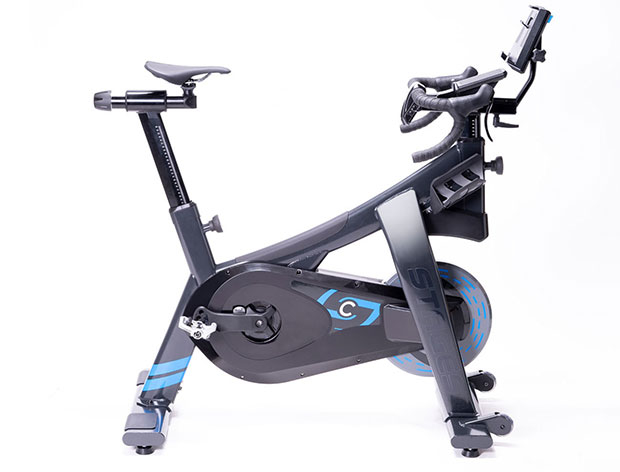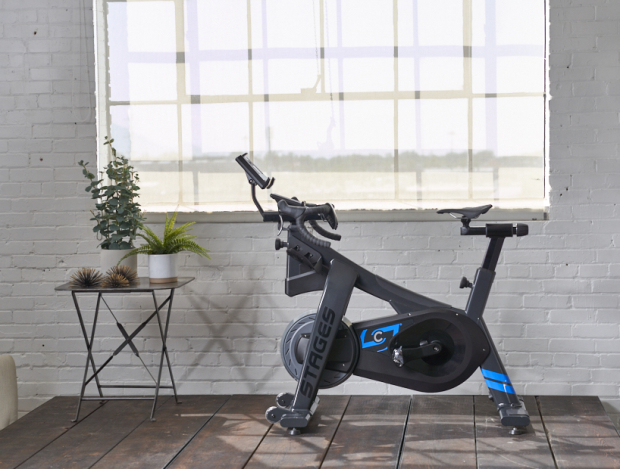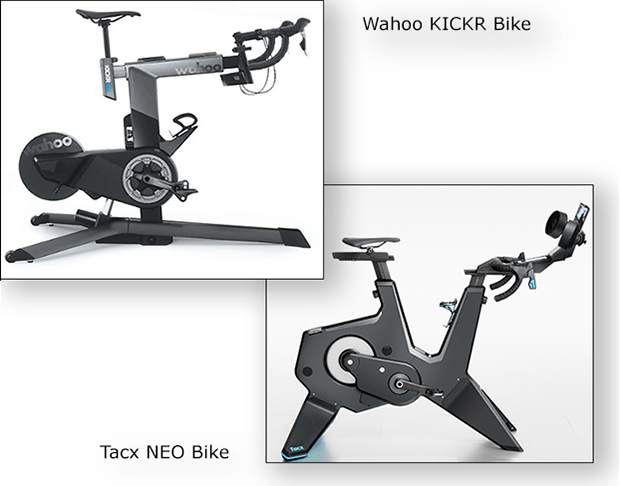Stages Solves Smart Bike Bar End Shifting
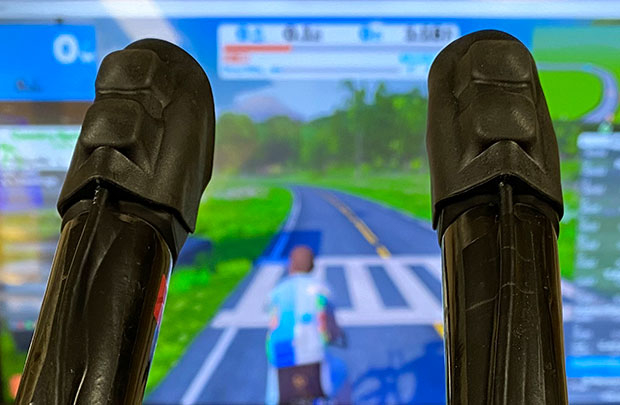
Sometimes I’m the last to know and that may well be the case today. But I know it now!
That thing I now “know” is at least one company’s solution to bar end shifting on a smart bike. If you’re confused already, let’s recap. I love smart bikes! And by that I mean I love smart trainers, but I really love smart bikes and a smart bike is a smart trainer built into an entire adjustable bike, like the Wahoo KICKR Bike, the Tacx NEO Bike, and the Stages SB20.
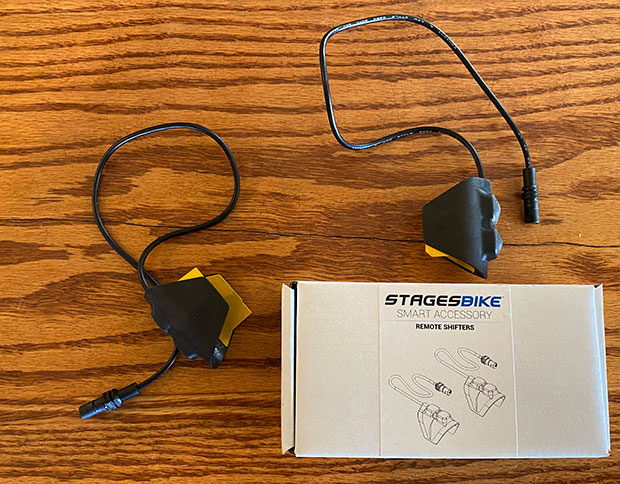
Here’s an irony for you. Triathletes, and Slowtwitchers in particular, have a very high rate of smart trainer usage, but are less interested in smart bikes. Why? Because a lot of triathletes ride stationary in the aero position. We asked you about 2 years ago, “When you ride stationary what is your bike style and position most of the time?” About 45 percent of you ride a road (or smart) bike in a road position; 30 percent said Tri bike in the aero position, and 22 percent tri bike in the pursuit position. I can’t imagine that will have changed much since this poll. What I do know is that a lot of you feel riding in the aero position is where you want to be, given the choice, and that number is probably between 25 and 50 percent of you.
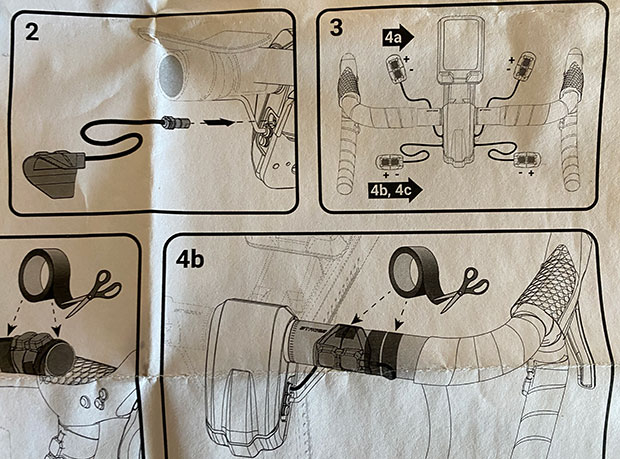
Smart bikes aren’t optimized for riding in the aero position. Assuming the bike can be set up to mimic your position – no certainty – it’s a pain to have to go to the road shifters on a smart bike to execute a shift. What I didn’t know is that Stages has a set of remote shifters – and has had these for a while – that solve this problem. I got a set – they cost $126; you can see this product here – and danged if that isn’t a solved problem for my own tri position riding.
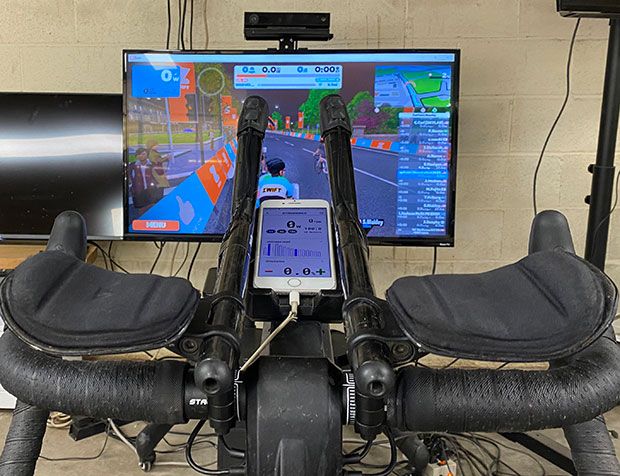
Age and tenure deliver an advantage: a cache of retired parts. For the Stages SB20 in my workshop I unretired a few parts, starting with a set of Profile Design clip-ons that I particular like because of comfort and ease of adjustability of the J5 bracket. For this use I found I needed to stick 20mm of pedestals under these bars to lift the bars above the console stand on this bike on which my handheld device sits (that’s another retired device I unretired, and I’ll get to that in a minute). You can see the whole set up in the image above. This pedestaling has an impact on the minimum height of the aerobar pads above the bottom bracket, which means some folks will not find this bike adjustable to their aero position. I’ll write in the near future about the practical limitations of this bike as an aero position tool. You can see the pedestals below.
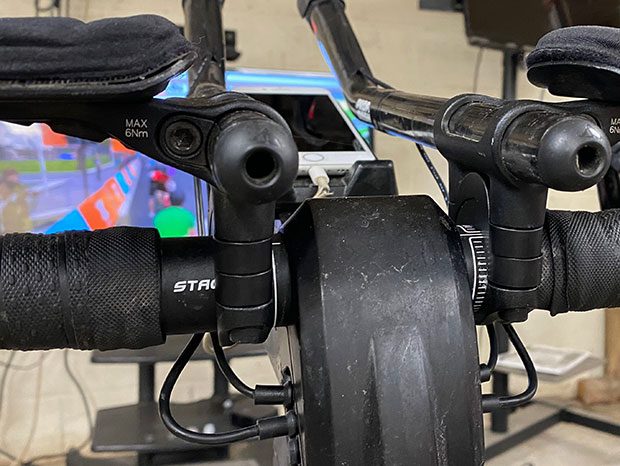
Because these shifter buttons sit on the extensions, on the round section, rather than plugging into the ends of the extensions, I felt I needed to extend these out in front of the extensions. I plugged in some old dead and decommissioned Shimano Di2 shifters, just to act as a place to mount these Stages remote shifters.
There are some ports on the Stages SB20, and in the included instructions for these shifters you see the port the shifter wires plug into. That port has a dust cover type plug; you remove the plug; and the jack has some “flats” that make it impossible to mess up left and right (only the left shifter goes in the left port; only the right can go in the right port). The image below shows the ports. The wires are just long enough to make it from the shifter to the port, and I think that’s because these shifters were never contemplated as bar-end shifters. In the image included on the Stages website you see these shifters on the handlebar drops, as in, if you want to shift while sprinting. They are entirely analogous to the wired remote shifters mad by component companies, like SRAM’s Multiclics.
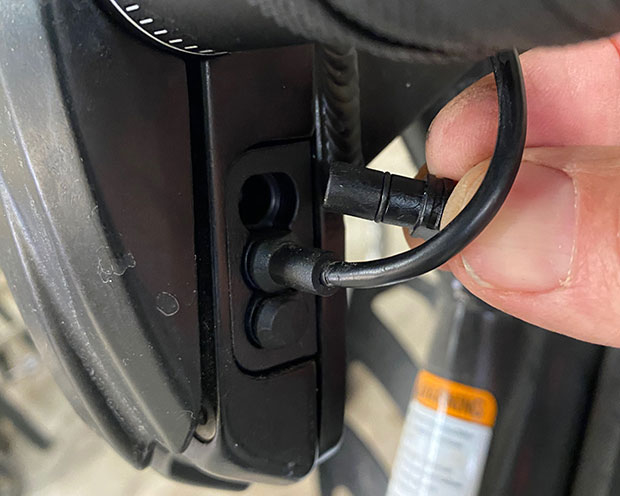
But, as with SRAM’s new Wireless Blips, you make your product and the Market decides what to do with it. In the case of both those Wireless Blips and with these Stages Remote Shifters some of the Market has decided these are really bar-end shifters.
That decommission/recommissioned iPhone you see in these images is my gear display. The only real knock on this bike is its lack of that display. But just in front of this console stand is a pair of powered USB ports and I leave this iPhone (5 or 6 or whatever it is) almost always plugged in, and its only job is to: 1) serve as the gear display, which is one window in the Stages app loaded onto this phone…
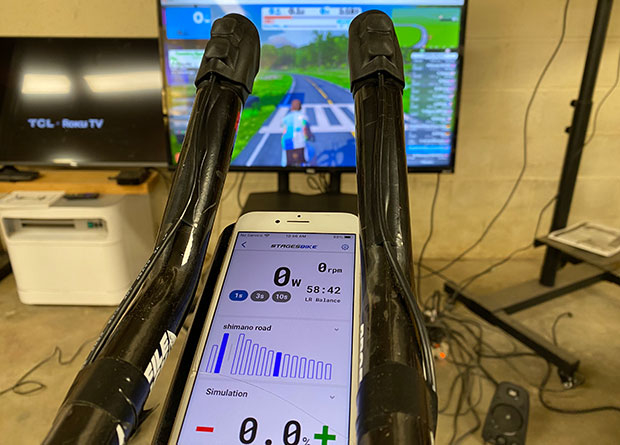
…and 2) to change the (virtual) gearing on this bike, which is one of my main loves of smart bikes.
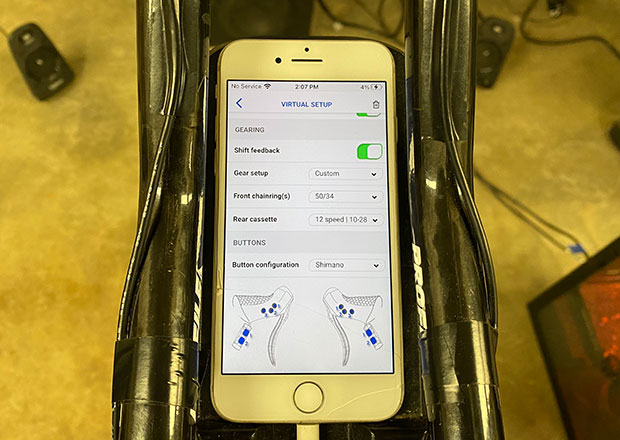
The gearing in all these smart bikes is changed inside the app. One unintended positive consequence from the omission (a blunder) of the gear display in the Stages bike is that this retasking of a handheld device as that gear display means that app is always open, right in front of you, and it’s convenient to change the gears whenever you want. That gear change display is shown above. Below is another screen in the Stages app that allows you to configure the buttons on both the road levers and these remote shifters we’re discussing today.
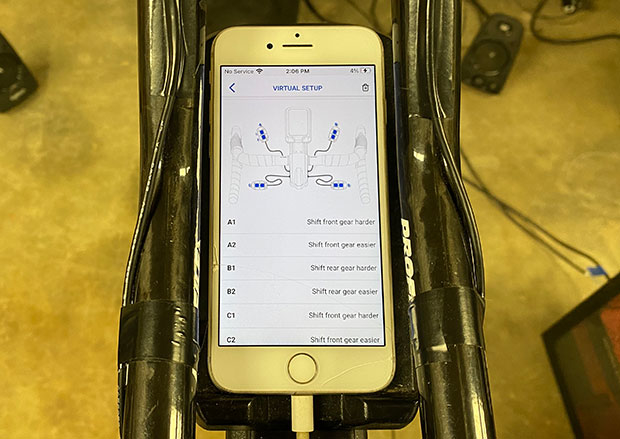
In point of fact, most of the time I don’t ride my stationary bike in the aero position; I ride it as a road bike. If I did ride this as an aero bike I would wrap these extensions with handlebar tape (the last several inches, where I hold with my hands).
The Stages SB20 smart bike has a lot of advantages. First is the street price, which at $2,500 (currently) is several hundred dollars below MSRP and well below those in its competitive set. Second, you can get it (most of the time). Third, it kind of adjusts like a fit bike, and as one who has designed fit bikes I like the adjustment scheme Stages has chosen. The crank length scheme matches that used by Wahoo (and both are better than the way Tacx does it). The question is whether my solution to the lack of a gear display works for you. I would have to say that for triathletes – who want to ride stationary in the aero position – the remote shifter moves the needle toward Stages, to whatever degree this feature is a benefit to you.
When I write again, it’s whether this bike will easily, practically, elegantly adjust to your tri bike fit coordinates.


